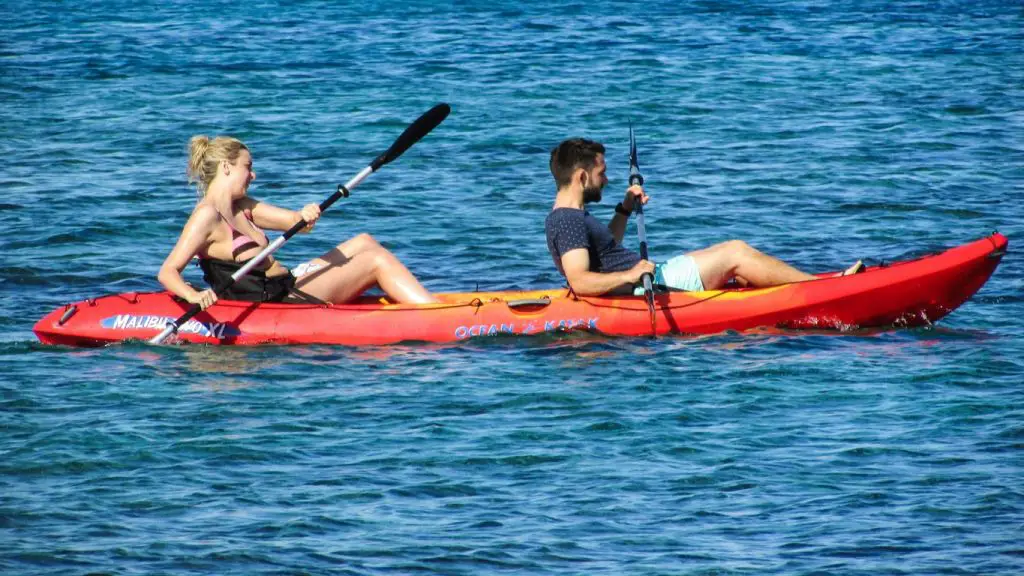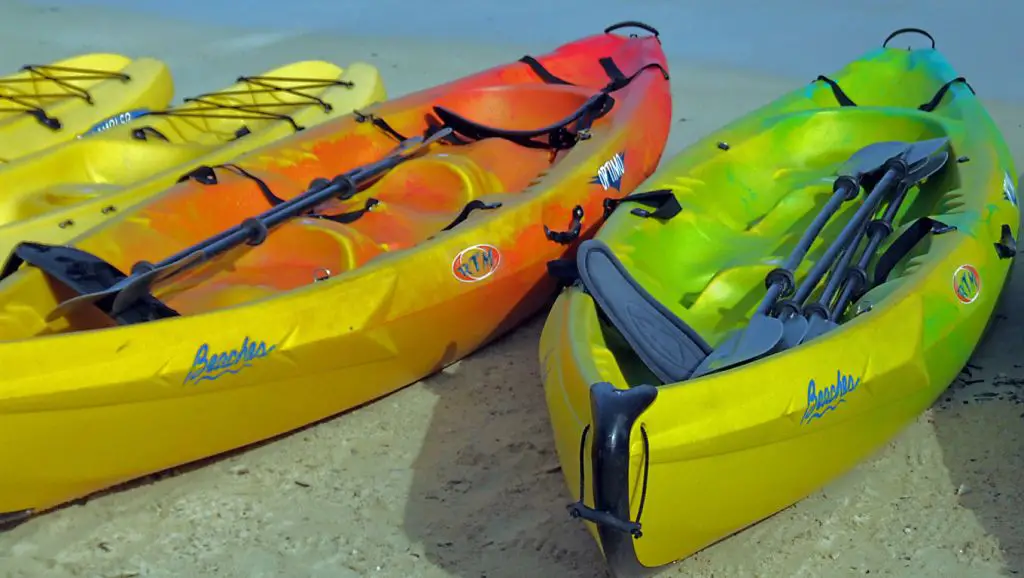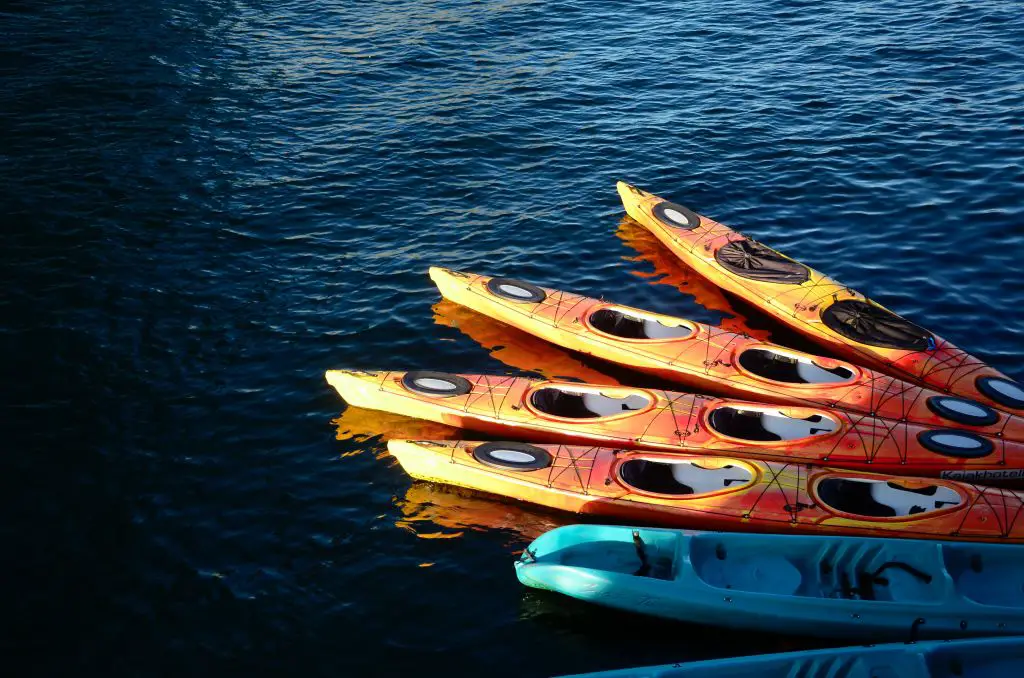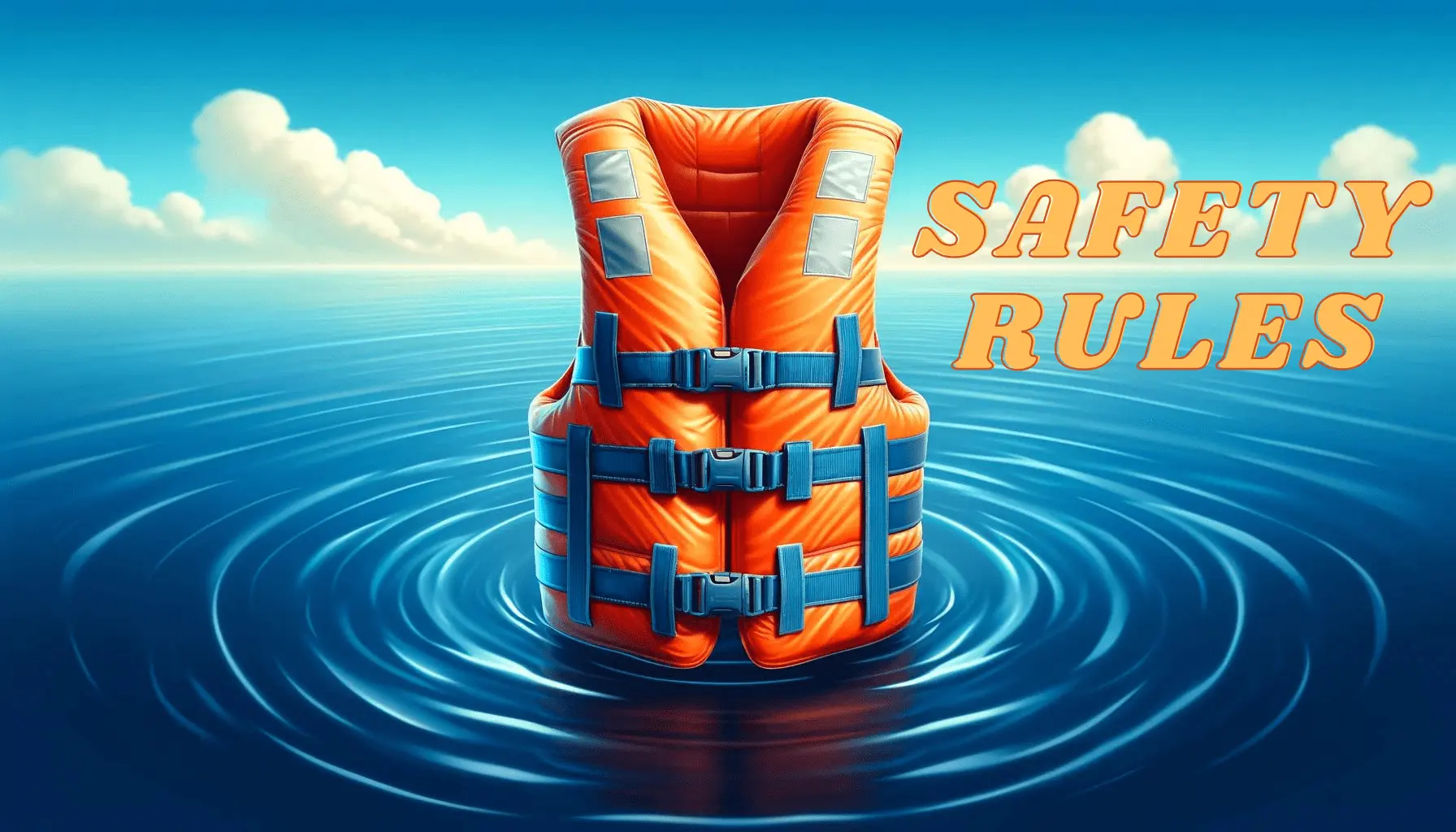Typically, our first experience kayaking was in a two-person kayak in the front, where beginners sit, of course. Over the years, as we gained experience, our lifestyles changed, and various configurations came to us naturally.
One such configuration is if your kayaking adventure partner is no longer available for your tandem trips. What do you do? Do you throw away your kayak and get a new one-person kayak?
You could do that, but you are here to find out the answer to the question: Can one person use a two-person kayak? And whatever life situation has brought you here, I have solutions for you.

Can one person use a two-person kayak?
Absolutely yes, one person can use a tandem or two-person kayak. Even though it is possible, the real question is: Should you do it? And if you can achieve it, how will you pull off such a feat?
You are in the right place because I’ve established that it is possible to repurpose a tandem kayak. However, one person paddling a two-person kayak is a challenging task.
And there are adjustments that must be made to the boat to paddle a tandem kayak successfully.
But before you find out how you can paddle a two-person kayak, let’s understand the differences between these two types of kayaks and what the pros and cons are when paddling a two-person kayak for one person.
Differences between a single-person kayak and a two-person kayak
First, what is a two-person kayak? Two-person or tandem kayaks are boats designed to fit two paddlers simultaneously. Let us describe the physical differences between both types of kayaks.
They are wider, longer, and heavier than a single-person kayak. Obviously, tandem kayaks will have two cockpits, and for taller people, the leg room could be constrained.
Aside from weight, length, and width, tandem kayaks have shorter paddles. Also, most tandem kayaks have a rudder or provisions for one because they are harder to steer than a one-person kayak.
Two-person kayaks have a number of uses. Couples can use them to enjoy a boat trip together. If it’s just a friend, that works as well. Maybe it’s you and your pet, a tandem kayak is perfect for that as well.
Also, two-person kayaks can be used for training. For many, our first kayaking experience was in the front of a two-person kayak, getting instructions from a seasoned kayaker behind.
Advantages of a single person paddling a tandem kayak
If you are able to successfully modify a tandem kayak for single-person use, then there are some wonderful advantages that may come about.
More space for the legs
As mentioned earlier, tandem kayaks can have limited legroom for taller people. If you had limited legroom in a tandem kayak, you can now have more.
Especially, because a paddling partner is out of the equation, you can clear out space and stretch your legs. This will be easier to do with a sit-on-top kayak than a sit-inside kayak, because sit-inside kayaks can be separated by a bulkhead.
Stability is better
You can have a better experience with the stability of the boat, especially if you have modified your two-person kayak appropriately.
That is, if your seat is close to the center and your gear is evenly distributed.
The bigger width of a two-person kayak prevents it from flipping over easily. A sit-inside kayak may need different adjustments, but better stability is still possible.
More storage space for your belongings
With the second seat removed, you can imagine there would be more storage space for your gear both in front and in the back.
Here, you will need to carefully consider how you store your gear on the kayak.
Although you have gained the ability to carry more weight, you will need to distribute the weight properly to have the best stability possible.
The disadvantages of solo paddling a two-person kayak
The lure of converting a tandem kayak for solo paddling may seem like a no-brainer with the advantages mentioned above.
However, there are drawbacks to using a two-person kayak for solo paddling.
It’s harder to transport
If you already have a two-person kayak, then you know how difficult it is to transport. This should serve as a warning for one-person kayak owners.
Many people report having difficulties transporting two-person kayaks, especially with their existing cars, lifting and removing the kayaks from their cars, etc.
It’s harder to maneuver
Already, a two-person kayak is difficult for two people to maneuver in the water. Therefore, a larger and longer boat will be more challenging for a solo paddler.
Also, problem areas will be found in swifter currents, narrow canals, and areas with tall grass and low-hanging branches over the water.
Difficulties with weight distribution
I have mentioned that attaining even weight distribution is important when using a two-person kayak for solo paddling. However, it is one of the trickiest areas to get right.
You could approach the problem scientifically by calculating the total weights (your gear and yourself) and positioning them based on your calculations.
However, in practice, you may find that micro adjustments need to be made to achieve the best balance. Different types of water will require different adjustments.
For example, calmer waters may be easier to figure out, while rapid currents need different adjustments altogether to get optimum weight distribution.
Due to its length and weight, you may find it hard to accelerate the watercraft as well as slow it down efficiently. Maintaining constant speed could be an issue as well.
Wind could also prevent you from keeping the watercraft traveling in a straight line, also known as “tracking.” These speed issues stem from weight distribution problems.
Remember that these disadvantages are amplified by being a solo paddler. Therefore, it is paramount to make sure you make the required adjustments to your two-person kayak.
How one person can use a two-person kayak
How do we work around the drawbacks of solo paddling with a two-person kayak?
Generally, you would want to do the things discussed below.
First, each type of kayak, sit-on-top or sit-inside has its drawbacks. It depends on what downsides you can live with.
In the water, sit-on-top two-person kayaks enjoy more stability as they are wider and longer than sit-inside kayaks. With an open arrangement, they are also more easily configurable and provide more storage too.
However, they are heavy and long and can be problematic for transport as well as navigation.
While sit-inside two-person kayaks are lighter and narrower, you lose storage and comfort on long trips. However, you gain maneuverability in the water, and they are easier to transport too.
If you want more space, the trick with a sit-inside tandem kayak is to get one that has one cockpit. Unless you are going sea kayaking. Tandem sea kayaks tend to have two cockpits.
Legroom may be limited because each cockpit is separated by a bulkhead.
But let’s dive into how you can actually make either of the general types of tandem kayaks work for you. Especially, if you are stuck with one of them and intend to make it work for your situation.
How do you go paddling alone if you have a sit-on-top kayak?

First, take off everything—the seats and any accessories. You’ll want to start with a bare kayak.
Second, make sure it is a comfortable and sturdy seat. Then you are going to mount this seat in the middle of the watercraft.
You may need to drill holes in the seat and use either rope or the fasteners you had for the seats that came with your kayak.
This should allow you to mount a seat closer to the middle of the watercraft to give you a more even weight distribution.
Then you can load up your gear with a much easier approach to balancing the kayak. Make sure to perform a safety check and ensure that everything is securely fastened.
I also suggest you watch the video below, which shows how to turn a two-person kayak into a single.
And how do you go paddling alone if you have a sit-inside kayak?

Now, if you are stuck with a sit-inside, two-person kayak from an earlier investment or were gifted one, these are the solutions.
Most sit-inside kayaks come with a rudder or a skeg, which will help in navigation. However, the main issue here is weight distribution.
To overcome any awkwardness, you would have to sit in the back seat of the kayak. (The rudder or skeg controls are typically in the back seat.) Then you have to make sure that the gear goes in the front seat and balances the kayak properly.
If the front of the watercraft is too light, it may rise out of the water, making the back sink a little. This effect will lead to other issues with steering, like taking on water, along with poor tracking and steering.
To address this, position your gear in front. You can use water bottles to counter the weight if it’s not enough. You can also take a pet, like a dog, if the animal is willing.
Another thing to do is to cover the front cockpit only if you are truly solo. This will prevent you from taking in water.
Final Thoughts
In summary, even though one person can effectively convert a two-person kayak, it is essential to remember that adjustments are required to your kayak to enjoy the experience.
Most importantly, know what works for you and be safe. Use the tips as a starting point to orient yourself on this journey.
However, if you are in the market for a new kayak and can’t decide between a tandem or solo kayak and a sit-inside or sit-on-top kayak, you should probably get a kayak that is designed to be easily configurable.
Depending on your intentions, you might be better off getting a highly adjustable and inflatable kayak that will suit multiple needs.



